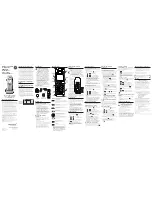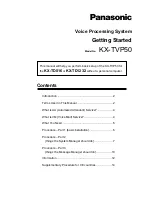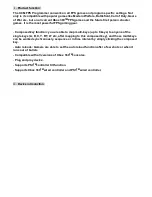
FiberPatrol Site Planning & Installation Guide
Page 39
Cable loss limits (maximum attenuation)
After being fully attached to the fence, each fiber sensor must be tested using an OTDR operating
at 1550 nm. Measure the loss from both ends of the cable, and use the higher of the two readings.
•
0.3 dB per km or less
•
individual event loss limit < 0.1 dB
Cable handling recommendations
•
Bend management systems must be used to restrict cable bend during installation so that the
minimum bend radius is not exceeded. (Cable pulleys of a suitable diameter must be used at
points where the cable changes directions during installation.)
•
Fused swivels and tension controlled hauling winches must be used to ensure the cable is
installed at a tension that does not exceed the specified limits.
•
Cable spools must be positioned to limit cable bending and minimize the angle of cable pay-off
during unwinding/hauling.
•
Cable spools must be held firmly in the pay-off stands to ensure smooth rotation and prevent
any vibration which can damage the drum and the cable.
Illustrated installation requirements
•
Attach the sensor cable to the fence fabric with cable ties at the junction of 2 fence wires.
Space the cable ties 50 cm (20 in.) apart.
•
Attach the sensor cable at both sides of each fence post about 25 cm (10 in.) away from the
post. Ensure the cable is snug against the fence post, but is not pulled tightly and stressed.
Note
Test the fibers from both ends of the cable before splicing the fibers in the
fiber connection module and end module.
Note
Fusion splice performance typically results in a loss of between 0.01 and
0.03 dB.
Figure 43 Cable tie spacing on fence fabric
Figure 44 Cable tie spacing at fence posts
50 cm (20 in.)
attach the sensor
cable at the junction
of 2 fence wires
cable tie spacing
25 cm (10 in.)
25 cm (10 in.)
50 cm (20 in.)
50 cm (20 in.)
















































